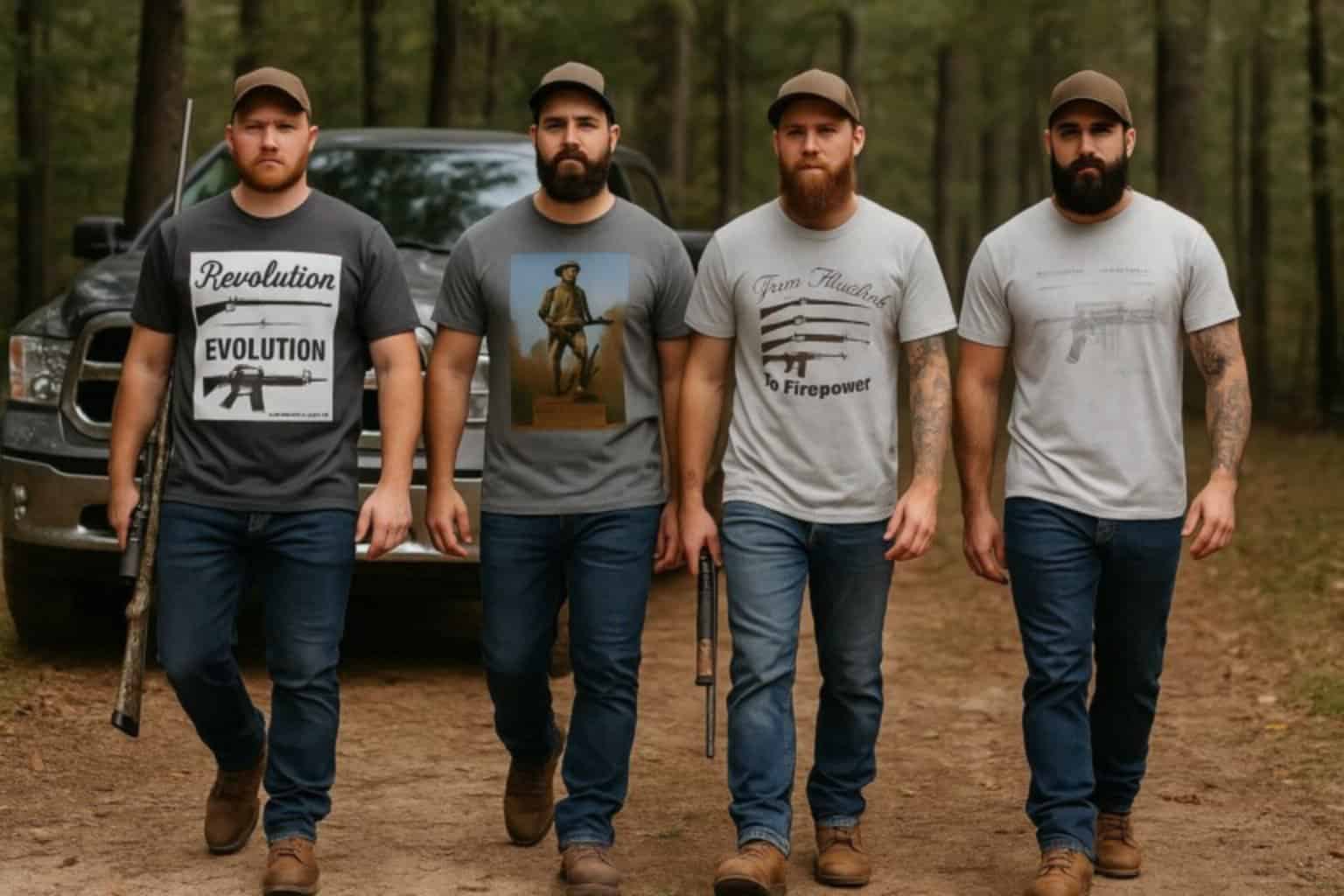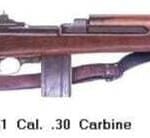
Introduction
The story of Rock-Ola Manufacturing Corporation and its role in producing the M1 Carbine during World War II is one of the most unexpected yet fascinating chapters in American industrial history. Best known for its iconic jukeboxes, Rock-Ola was one of ten companies contracted to manufacture the M1 Carbine, the lightweight, semi-automatic rifle that became indispensable to American forces. Despite its roots in the amusement industry, Rock-Ola’s adaptation to military arms production showcases the remarkable versatility of American manufacturing during the war.
The Origins of Rock-Ola Manufacturing Corporation
Rock-Ola Manufacturing Corporation was founded in 1927 by David Cullen Rockola, a Canadian immigrant who settled in Chicago. Initially involved in producing coin-operated machines such as gambling devices, scales, and vending machines, the company shifted its focus to jukeboxes in the 1930s following government crackdowns on gambling machines. This transition cemented Rock-Ola as a household name in the entertainment industry, with its jukeboxes becoming synonymous with the golden era of American music.
By the late 1930s, Rock-Ola had built a reputation for precision engineering and high-quality metalwork. These capabilities would prove crucial when the United States entered World War II and civilian industries were called upon to support the war effort. Like many other manufacturers, Rock-Ola faced the challenge of transitioning from peacetime production to wartime manufacturing—a shift that would lead to its unlikely role in firearm production.
The M1 Carbine and the Need for Mass Production
With the attack on Pearl Harbor in December 1941, the U.S. found itself in dire need of modern weaponry. The standard-issue M1 Garand rifle was an excellent battle rifle, but it was too heavy and unwieldy for support troops, airborne units, and officers who required a lighter firearm. In response, the U.S. military sought a lightweight, semi-automatic rifle that could fire the newly developed .30 Carbine cartridge.
The task of designing this new weapon fell to Winchester Repeating Arms Company, which developed the M1 Carbine in just 13 days. The carbine proved to be a game-changer—lightweight, easy to use, and highly effective for its intended role. However, the demand for these weapons quickly outstripped Winchester’s production capacity. As a result, the War Production Board enlisted ten companies to manufacture the M1 Carbine, including Rock-Ola.
Transition to Firearms Production
Rock-Ola was awarded its initial contract to produce 100,000 M1 Carbines, which was later expanded. While jukebox manufacturing and firearms production might seem unrelated, Rock-Ola’s expertise in precision metalworking and machining made it a suitable candidate for firearm production. However, the transition was not without challenges.
Unlike industrial giants such as General Motors’ Inland Division, Rock-Ola was a relatively small company. Retooling its facilities for firearm production required significant investment and adaptation. The company had to acquire specialized equipment, train its workforce, and ensure that every rifle met stringent military specifications. Quality control was a major focus, as all M1 Carbine parts were designed to be interchangeable among manufacturers, necessitating extreme precision.
From 1942 to 1945, Rock-Ola successfully produced 228,500 complete M1 Carbines, making it one of the rarer manufacturers. Additionally, the company's manufactured receivers and other components that were sometimes used by other contractors.
Challenges in Production and Quality Control
Early in its production run, Rock-Ola encountered difficulties related to heat-treating processes, leading to minor quality control issues with certain parts. However, these challenges were quickly addressed, and their carbines soon gained a reputation for their finely machined receivers and well-crafted components.
Rock-Ola sourced some of its barrels from Buffalo Arms and used stocks produced by subcontractors such as Overton. The company's M1 Carbines went through multiple minor design modifications throughout their production, including changes to sights, barrel bands, and bolt finishes to align with evolving military requirements.
Markings and Collector Significance
One of the distinguishing features of Rock-Ola M1 Carbines is their receiver markings, which bear the distinctive "ROCK-OLA" name. These markings, along with their relatively low production numbers, make Rock-Ola carbines highly desirable among collectors today.
Rock-Ola M1 Carbine Serial Number Ranges:
- First block: 1,662,250 – 1,762,519
- Second block: 4,532,100 – 4,632,099
Because of the smaller production volume, original, unmodified Rock-Ola carbines can command premium prices on the collector market.
Use in Combat
Rock-Ola M1 Carbines saw extensive service in the European and Pacific theaters of World War II. These weapons were issued to paratroopers, officers, machine gunners, and support personnel who needed a compact firearm. Troops appreciated the carbine’s lightweight design and rapid-fire capability, though its stopping power was sometimes criticized compared to full-power battle rifles.
After World War II, the company's carbines continued to see use in the Korean War and even in the early years of the Vietnam War. Many were supplied to allied nations as part of U.S. military aid programs.
Post-War Legacy
With the conclusion of World War II, Rock-Ola swiftly returned to its core business of jukebox manufacturing. The company resumed its position as a leader in the entertainment industry, producing some of the most iconic jukebox models of the 1950s and beyond. However, its brief but significant contribution to the war effort had permanently linked its name to one of the most famous American firearms of World War II.
Today, Rock-Ola carbines stand as a testament to the adaptability and ingenuity of American industry during wartime. Collectors and historians continue to recognize the unique legacy of the "jukebox manufacturer turned arms producer," ensuring that Rock-Ola’s role in the war is never forgotten.
Conclusion
The story of Rock-Ola and the M1 Carbine is a remarkable example of industrial versatility in the face of global conflict. From jukeboxes to battle rifles, Rock-Ola’s journey underscores the critical role that private industry played in arming American troops during World War II. While its name remains synonymous with classic jukeboxes, Rock-Ola’s wartime contribution to the production of the M1 Carbine cements its place in military history.
For historians, firearms collectors, and enthusiasts, Rock-Ola M1 Carbines represent not just a functional piece of military hardware but a fascinating piece of industrial history—one that bridges the worlds of entertainment and warfare in a way few other companies can claim.
Sources and References:
- Canfield, Bruce N. Complete Guide to the M1 Carbine. Andrew Mowbray Publishers, 2010.
- Ruth, Larry L. War Baby! The U.S. Caliber .30 Carbine, Volumes 1 & 2. Collector Grade Publications, 1992.
- War Department. Technical Manual TM 9-1276: U.S. Carbine, Caliber .30, M1, M1A1, M2, and M3. U.S. Government Printing Office, 1947.
- McCollum, Ian. "M1 Carbine History and Production." Forgotten Weapons, 2018.
- U.S. Ordnance Department Production Reports, 1942-1945.
Want to meet with other enthusiasts and join discussion on this topic? Here are some forums:
If you know of any forums or sites that should be referenced on this listing, please let us know here.




